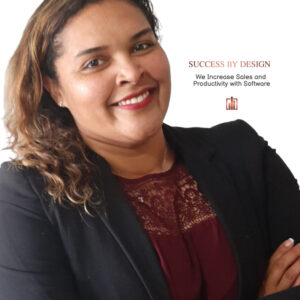10 Considerations For Effective Online Courses
Effective online courses are well designed so that teaching and learning is organized in the most effective and engaging manner possible. In an online learning situation, the student’s learning experience is almost entirely mediated through some form of technology; therefore, the design of the teaching and learning experience is especially critical.
Instructional Design is a broad term that encompasses the selection, organization, sequencing, and assessment of content, tools, and experiences to help learners attain a certain set of goals. Poorly designed technology-based courses can confound learning, frustrate learners and instructors, and result in high attrition rates. Oftentimes, a focus on Instructional Design often focuses on micro-level actions – which apps to use, which videos to include in a course (all important). This article instead focuses on several (though not all) good, high-level, Instructional Design practices for creating effective online courses – primarily for teachers in an online learning program.
Instructional Design: A Big Picture View
Effective online courses do the following:
1. They Are Grounded In An Understanding Of The Learning Process.
An effectively designed online course or program must take into account multiple factors – the characteristics of targeted learners, the nature of the content, the role of the community in shaping learning, and integration of ongoing feedback and assessment; ample opportunities for practice and expert feedback to guide the development of knowledge in action.
2. They Are Based On The Needs Of Adult Learners.
Research on adult learning demonstrates that adult learners share common characteristics and beliefs that can be integrated into any learning experience. Adult learners:
- Need to be treated with respect and recognition and their professional experiences integrated into workshops and discussions.
- Are practical and want solutions they can implement to address real-life challenges.
- Are self-directed and need to be given the opportunity to reflect on and analyze their own practice.
- Need to process information as part of learning.
- Have different learning styles.
- Need support of peers.
3. They Link Theory And Practice.
Online teacher professional development has been critiqued for its relative failure vis-à-vis face-to-face instruction to integrate theory with practice. As such, concepts such as “pedagogical knowledge” remain more conceptual than practical – focusing on knowledge about practice versus knowledge in practice. Using real-time video –such as a videoconferencing system or web cameras– can capture practice “live” (though stationery video systems may not provide a full picture of student interactions and behaviors). Videorecording teachers’ practice at certain points in the school year can provide a visual archive of teacher progression or regression in a certain area. And video can also be shared with other teachers as a study tool.
4. They Accommodate Range Of Learning Styles.
Cognitive models or “frames of mind” shape the way learners perceive and process information and suggest that an individual’s ability to learn is influenced by the manner in which information is presented. Course designers should create an array of assignments, activities, and assessments that allow learners to interact and practice with content in multiple ways, on multiple cognitive levels and using multiple measures and methods to assess learning.
5. They Are Accessible.
Effective online courses should be accessible to all learners. One way to do this is to make sure courses are “universally” designed. Universal Design for Learning (UDL) advocates that all learning experiences should be purposefully designed to be “barrier free” and accessible by providing multiple and flexible methods of the following elements:
- Presentation of information and knowledge (e.g., voice-to-text applications, screen readers, digital books).
- Expression with alternatives for students to demonstrate what they have learned (e.g., concept mapping).
- Engagement to tap into diverse learners’ interests, challenge them appropriately, and motivate them to learn (choices among various scenarios for learning the same competency).
6. They Are “Flexibly” Designed.
One of the most common misconceptions in online education is that face-to-face curriculum can be transferred wholesale to a distance education format. Rather, online courses must be designed “flexibly” and specifically for an online medium. Flexible design proposes that content be organized in flexible formats, used in a variety of activities and accessible through a variety of technologies to allow for customized learning experiences. Some of its key components are:
a) Medium of delivery.
Maximizing the strengths of the technology delivery model or modality while mitigating its weaknesses.
b) Organization.
Content, activities, and experiences should be sequential, cumulative, and coherent. They should be highly interactive and allow for a range of levels of learning, learner entry points, and experiences. Information should be “chunked” and moves sequentially from simple to complex; concrete to abstract and general to specific, in clear, concise text.
c) Design clarity.
This includes ease of access and navigation. Such clarity and the intuitive organization of materials significantly influence learners’ satisfaction and perceived learning of course material in online learning environments.
d) Types of learner experiences.
Flexibly designed courses favor “ill structured” activities over well-structured ones; interactivity over passivity; inductive over deductive instruction; and activity over text and lecture. Such course design supports both the individual and group’s learning and promotes applied approaches to learning.
e) Digital tools.
Must be functional; provide multichannel opportunities to build understanding of complex concepts; allow for the completion of a range of tasks (finding information, communicating, writing, reflecting, organizing information, etc). Technology should be not just a medium of delivery but a learning aid that provides opportunities for concrete, contextually meaningful experiences through which they can search for patterns, raise their own questions, and construct their own models, concepts, and strategies.
7. They Offer Flexible Delivery.
In addition to being flexibly designed, distance courses should be flexibly delivered. Flexibly delivered courses offer:
- Realistic options and choice in terms of time, place, and technology.
- Multiple modes of delivery (in the workplace; in block modes; modules; interactive format and other “non-standard” delivery).
- Options for delivery include alternative ways of on campus, in-class, independent lectures, seminars, tutorials, and practical sessions.
- Accommodation of the diverse learning needs and learning styles of learners.
- Use of technology and resources for learning supports to provide options to any students to access and use materials in his/her own place (e.g., web-based teaching materials and exercises or assessment that is not time and place specific).
8. They Provide For Flexible Assessment.
Assessment is often the weakest component of an online program. One way to improve assessment is to design a “flexible assessment” system. Flexible assessment involves the following practices:
- Uses synchronous and asynchronous approach to assessment.
- Utilizes a range of assessment formats, for example computer-based, performance-based, and face-to-face assessments in a central location with proctors and invigilators.
- Employs a combination of formative and summative assessments.
- Collaborative assessments in which teachers and teacher candidates create, joint products to showcase their learning (e.g. folksonomies).
- Grading policies that combine self-, peer-, and instructor assessment of the products, processes and progress of learning.
9. They Use A Variety Of Media.
A mix of media is more effective than the reliance on one type of media because it satisfies the many types of learning preferences that one person may embody or that a class embodies. Particularly in print- and web-based professional development courses which are primarily text heavy, the use of still and moving visual media can help learners who are poor readers better understand content.
Print instruction should be delivered in an individualized mode which allows the learner to set the learning pace. Visual media –such as animations and simulations– can help learners enhance their understanding of concepts, such as object identification and spatial relationships. Visual media which portray motion can demonstrate psychomotor or cognitive domain expectations by showing the skill as a model against which students can measure their performance. Images can enhance vocabulary and reading comprehension for poor readers. Full motion video can be used to depict performance so that learners can copy the movement. Audio narration can help poor readers comprehend information and music can serve as a memory aid. Literacy research shows that readers remember what they’ve read if key words are highlighted by different colors and font styles. Color coding concepts is also an effective visual mnemonic.
10. They Are Interactive.
“Interactivity” is one of those terms we often use without clearly defining. It involves 5 levels:
- Learner interaction with an object or person in a way that allows learners to improve their knowledge and skills in a particular domain.
- Multiple communications between learners around an object of study, a tool, or an experience.
- Learner control and program adaptation based on learner input.
- Reciprocal process of information exchange and sharing ideas between students and teachers.
- Multiple forms of synergistic participation and communication that aid the development of meaningful learning.
A full list of references used in this post can be found in pages 138-150 of Burns, M. (2011), Distance Education for Teacher Training: Modes, Models, and Methods. Washington, DC: Education Development Center, Inc.









